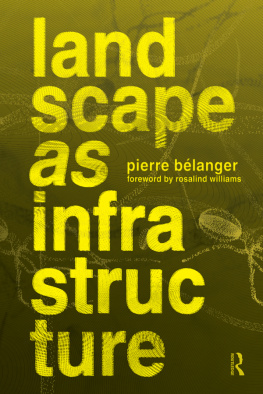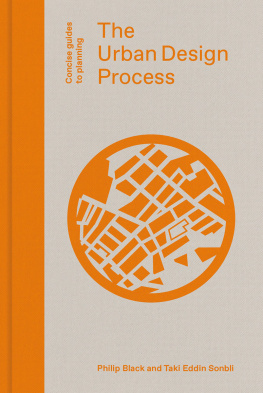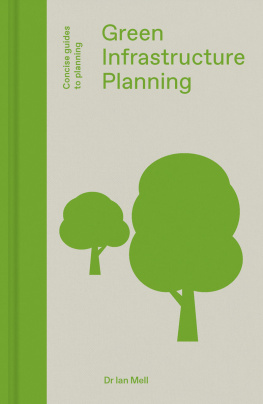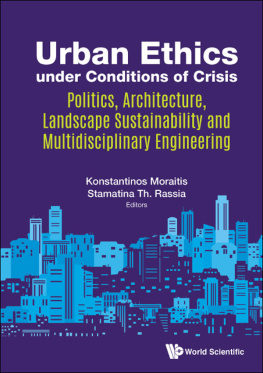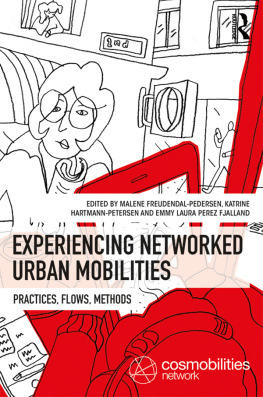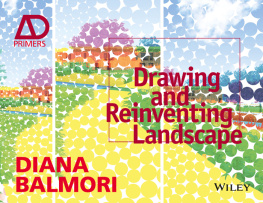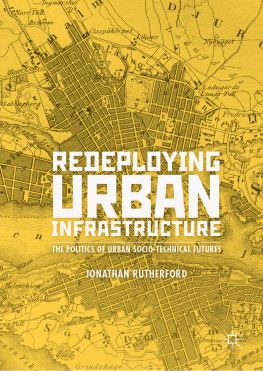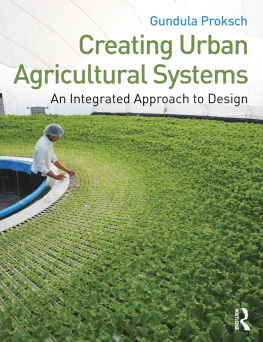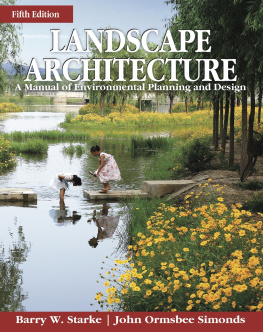pierre blanger
As ecology becomes the new engineering, the projection of landscape as infrastructurethe contemporary alignment of the disciplines of landscape architecture, civil engineering, and urban planninghas become pressing. Predominant challenges facing urban regions and territories todayincluding shifting climates, material flows, and population mobilities, are addressed and strategized here. Responding to the under-performance of master planning and over-exertion of technological systems at the end of the twentieth century, this book argues for the strategic design of infrastructural ecologies, describing a synthetic landscape of living, biophysical systems that operate as urban infrastructures to shape and direct the future of urban economies and cultures into the 21st century.
Pierre Blanger is Associate Professor of Landscape Architecture and Co-Director of the Master in Design Studies Program at Harvard Universitys Graduate School of Design. As part of the Department of Landscape Architecture and the Advanced Studies Program, Blanger teaches and coordinates graduate courses on the convergence of ecology, infrastructure, and urbanism in the interrelated fields of design, planning, and engineering. Dr. Blanger is author of the 35th edition of the Pamphlet Architecture Series from Princeton Architectural Press, GOING LIVE: from States to Systems (pa35.net), co-editor with Jennifer Sigler of the 39th issue of Harvard Design Magazine, Wet Matter, and co-author of ECOLOGIES OF POWER: Countermapping the Logistical Landscapes & Military Geographies of the U.S. Department of Defense. As a landscape architect and urbanist, he is the recipient of the 2008 Canada Prix de Rome in Architecture, as well as the Curator for the Canada Pavilion and Exhibition EXTRACTION (extraction.ca) at the 2016 Venice Architecture Biennale.

First published 2017
by Routledge
2 Park Square, Milton Park, Abingdon, Oxon OX14 4RN
and by Routledge
711 Third Avenue, New York, NY 10017
Routledge is an imprint of the Taylor & Francis Group, an informa business
2017 Pierre Blanger
Layout, Design, Cover: OPSYS Media
Copyediting: Danika Cooper, Erin Wythoff, Karen Moser, Hernn Bianchi Benguria
Image Editing & Permissions: Srna Vanbutsele
The right of Pierre Blanger to be identified as author of this work has been asserted by him in accordance with sections 77 and 78 of the Copyright, Designs and Patents Act 1988.
Dedicated to the memory of Michael Houghlandscape architect, urban ecologist (19282013): Total control is impossible, biodynamics can only be triggered, manipulated, amplified, attenuated or registered. Nothing is new; everything exists already in one form or another.
All rights reserved. No part of this book may be reprinted or reproduced or utilised in any form or by any electronic, mechanical, or other means, now known or hereafter invented, including photocopying and recording, or in any information storage or retrieval system, without permission in writing from the publishers.
Trademark notice: Product or corporate names may be trademarks or registered trademarks, and are used only for identification and explanation without intent to infringe.
British Library Cataloguing-in-Publication Data
A catalogue record for this book is available from the British Library
Library of Congress Cataloging-in-Publication Data
Landscape as Infrastructure: A Base Primer / Pierre Blanger.
New York, NY: Routledge, 2017.
Includes bibliographical references and index.
LCCN 2015049549
Subjects: 1. Landscape Architecture. 2. Sustainable Development. 3. Infrastructure (Economics)
SB472 .B3585 2016
DDC 712 dc23
LC Record available at http://lccn.loc.gov/2015049549
ISBN: 978-1-138-64391-8 (hbk)
ISBN: 978-1-138-64392-5 (pbk)
ISBN: 978-1-315-62915-5 (ebk)
Typeset in News Gothic and Century
by OPSYS Media
Funding: Harvard Graduate School of Design, Landscape Architecture Canada Foundation, Netherlands Architecture Fund, Canada Foundation for Innovation, Social Sciences and Humanities Research Council, University of Toronto Daniels School of Architecture, Landscape and Design, and Wageningen University.
pierre blanger
landscape as infrastructure
a base primer
foreword by
rosalind williams
Contents
Infrastructure
as Lived Experience.
When in the course of human events it becomes necessary to understand events that are momentous and unprecedented, we humans must devise new language. We invent new words, recast old ones, and arrange them into new constellations. New language enables new ideas and concepts, which continue to evolve along with the historical phenomena they purport to describe.
This reflexive process is taking place as we confront a new phase of history, in which human and natural history are converging as never before. In this new phase, human beings are not just changing the face of the earth but are changing the fate of the earth and therefore the human fate.
By the late nineteenth century, it was already evident that traditional terms such as industry and mechanicseven in souped-up versions like the industrial revolution or mechanical agewere inadequate to describe what was happening. In the 20th century the word technology outgrew its earlier, circumscribed meaning as the study of the practical arts, becoming redefined as the prime determinant of history: the agent of general, unspecified, irresistible change. More or less simultaneously, the word environment displaced nature as a collective term for the life of the planet.
Of all the revolutions of the 20th century, none is more astounding than this one: the sudden collapse of history and nature as fundamental descriptors of human experience. History and nature bite the dust. History is reduced to technological change; nature, to the human surround.
As technology and environment emerged as key terms, they were often clustered with two other young words, urbanization and infrastructure. The first refers to the built world of settlements, the latter to the built world of connections. This cluster of language becomes tight-knit and self-reinforcing. Urbanization and infrastructure converge as city life extends beyond city boundaries. Technology and environment converge into the technological environment. As the building of the world has accelerated, this linguistic knot has become tighter and tighter.
Then Pierre Blanger steps in, suggesting that we bring landscape into the discussionThis is the pivotal moment, when the artist, designer, or viewer picks up an image of the world, any image, and decides to look at it not from a portrait orientation (taller than it is wide) but from a landscape orientation (wider than it is high).
The horizontal perspective changes everything. It is not just that the word landscape is centuries older than technology, environment, urbanization, and infrastructure, and therefore brings with it a much deeper well of human experience. It is not just that the word relates to both the art of landscaping and that of painting, and therefore evokes far more complex and powerful ways of knowing the world than utilitarian problem-solving. It is above all that the landscape orientation looks at the world as a human being looks at it: an individual with a point of view, taking it all in at once, part of the life of the place and time, part of the landscape, not its imperial overlord.

